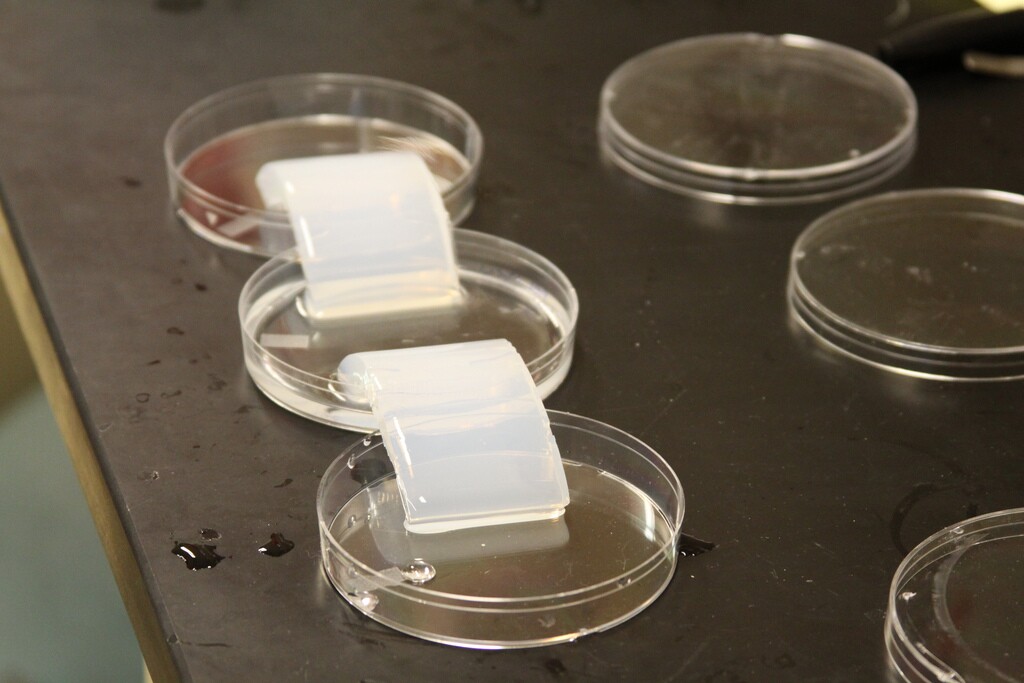Stem cells, which have the ability to become various other types of cells, are at the heart of the burgeoning field of regenerative medicine – if a patient’s stem cells could be raised outside of their body, and their growth dictated, they could ultimately be used to grow replacement body parts that wouldn’t be rejected. It’s challenging, however, to create sufficient growing conditions in a petri dish. In order for stem cells to grow and differentiate within the body, they rely on chemical, mechanical and electrical cues. Although chemical cues have been combined with mechanical or electrical cues in lab settings, no one has so far been able to combine all three... at least, not until now.
The triple play was achieved by a class of bioengineering undergraduate students at the University of California, San Diego, in the Jacobs School of Engineering. “We mimicked all these cues that the native environment provides to the cells,” said Prof. Shyni Varghese, who advised the students. “This work is therefore fundamental to creating more life-like environments for stem cells in order to steer stem cells toward specific cell types such as chondrocytes, osteoblasts, myoblasts or cardiomyocytes.”

A slab of gelatinous hydrogel, bathed in an electrolyte solution compatible for cell growth, is home to the students’ stem cells – it also supplies the chemical cues. When an electrical current is passed through the gel, it causes the slab to bend, thus creating mechanical strain and mimicking the mechanical cues.
So far, the class has been able to coax bone marrow derived stem cells to differentiate into cartilage cells. “The ultimate goal of regenerative medicine is to make healthy tissues and differentiated cells with regenerating ability that can save lives. We are not there yet, but this work takes us one step closer,” said Varghese.
The research was just published in the journal Advanced Functional Materials.





